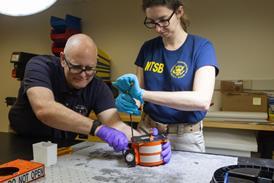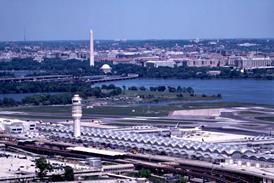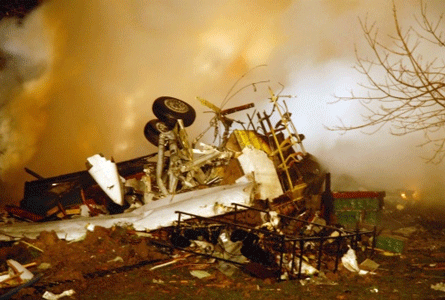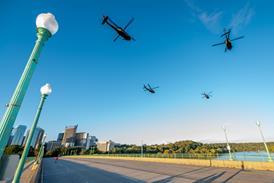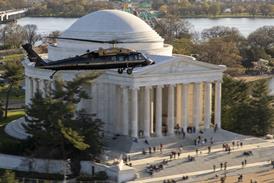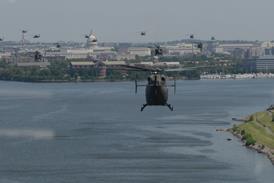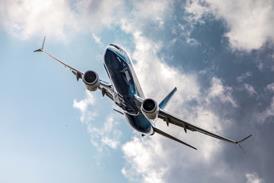
Graham Warwick/WASHINGTON DC
Business aircraft development today is a matter of finding and filling market niches. The old class distinctions of light, mid-size and large business jets are gone. In their place is a virtual continuum of corporate jets from entry-level to ultra-long-range.
Most of this cross-genre blurring has occurred only recently as manufacturers have sought to stimulate demand by offering more for less. By combining the cabin comfort of a mid-size aircraft with the price of a light jet, manufacturers created the "superlight" class, exemplified by Bombardier's Learjet 45 and Cessna's Citation Excel.
The "super mid-size" class, meanwhile, is claimed to offer the comfort of a large aircraft at the price of a mid-size jet. The first example was Dassault's Falcon 2000, and it has been followed by Galaxy Aerospace's Galaxy and Raytheon's Hawker Horizon.
Superlight and super mid-size aircraft fill gaps that manufacturers perceive in the market, rather than superseding any of the established classes. Neither offers quite as large a cabin as the next size up, or quite as low a price as the next size down. But they do provide convenient interim steps between the traditional business jet classes.
The super mid-size class was conceived to fill the price gap between mid-size aircraft at $10-12 million and large jets at $20-30 million. The aircraft now in this sector range in price from $15 million to $20 million, and offer different combinations of cabin size and performance.
Manufacturers are interested in the mid-size segment because of its potential for growth. Light business jets are the most numerous class today, but customers are expected to trade up over time. The next sales "wave", therefore, can reasonably be expected to take place in the mid-size sector.
There are signs that wave is already building. figures from the US General Aviation Manufacturers Association (GAMA) show deliveries of mid-size aircraft increasing: 59 in 1995, 67 in 1996, and 95 in 1997 - with sales so far this year already well ahead of last year's. The GAMA figures do not include deliveries by non-US manufacturers - which are significant, and increasing.
FUELLING GROWTH
The wave is building before many of the new super mid-size aircraft have even reached the market. Growth in the sector has been fuelled so far by the increasing popularity of existing mid-size aircraft. They appeal particularly to the operators of fractional ownership programmes, attracted by the combination of comfort and range that they offer.
Executive Jet (EJI) has ordered almost 300 aircraft for its NetJets fractional-ownership programme - and half of them are mid-size jets. EJI is the largest customer for: the Cessna Citation VII (20 aircraft) and X (31); Dassault Falcon 2000 (38); and Raytheon Hawker 800XP (40) and 1000 (24).

About half of the aircraft in Bombardier's 40-plus FlexJet fractional-ownership fleet are mid-sized Learjet 60s, while the Hawker 800XP makes up about one-third of the Raytheon Travel Air fractional fleet of some 30 aircraft.
Fractional interest can turn an aircraft programme around. Cessna's high-speed Citation X was regarded as a slow seller until 1996, when the initial NetJets order for 25 was placed - and EJI says the mid-sized aircraft is proving a popular upgrade option for owners.
Cessna's Citation VII, meanwhile, was given a new lease of life in 1996 by a 20-unit order from EJI, and within a year the aircraft was the first mid-size jet introduced into the company's NetJets Europe programme - Falcon 2000s and Hawker 800XPs are to follow.
Not surprisingly, manufacturers are beginning to listen closely to operators like EJI when defining new aircraft. Fractional ownership is expected soon to account for 15% of total business jet sales, and Bombardier says that its FlexJet programme already accounts for 25% of Learjet production.
Other than the Falcon 2000, super mid-size aircraft have yet to factor in the fractional equation, although Travel Air already has Hawker Horizons on order for delivery early in the next decade. Galaxy, meanwhile, is working to firm up interest in fractional ownership of its eponymous super mid-size jet.
TRADITIONAL MARKET
The traditional mid-size market, meanwhile, is dominated by two types, the Learjet 60 and Hawker 800XP - both designs that can trace their lineage back several decades. The Learjet 60, certificated in 1993, is an update of the earlier Model 55. Bombardier had sold 135 Learjet 60s by mid-1998. The upgraded 800XP was certificated in 1995 as the latest in a long line of "Hawker" business jets (the 1,000th will be delivered this year).
Completing the field of established mid-size runners are the Citation VII, Dassault Falcon 50EX and the Galaxy Astra SPX - all based on designs now into their second or third decade of service. The Citation VII was certificated in 1992 as an upgrade of the Citation III. The SPX, the latest version of the Israeli-produced Astra, was approved in 1995, while the upgraded Falcon 50EX was certificated in 1996.
Four of the aircraft are priced in the $10-12 million range, while the Falcon 50EX comes in at over $17 million. The Learjet 60 and Hawker 800XP are direct competitors, with the same 1.8m cabin diameter and 4,600km range. The Citation VII is smaller, with a 1.7m-wide cabin and 4,100km range, compared with the 1.9m-wide cabin and 5,000km range of the Falcon 50EX. The Astra SPX has the smallest cabin, at 1.5m wide, but the longest range, at 5,500km - it is also the fastest, cruising at Mach 0.82.
The first aircraft to break the mid-size mould - but in different ways - were the Citation X and the Falcon 2000. The French design was certificated in 1995 and essentially ushered in the concept of the super mid-sized business jet. It has a widebody (2.3m-diameter) cabin and a transcontinental (5,500km) range - characteristics shared by the super mid-size designs that have followed.
Cessna, meanwhile, took a different course, pursuing performance over comfort. Certificated in 1996, the Mach 0.92 Citation X is a technical triumph, but is not considered a super mid-size jet, although it carries a pricetag in the $15 million range. Fuselage cross-section is unchanged from the Citation VII, although the cabin is longer and slightly wider, so the aircraft offers only mid-size levels of comfort (albeit over trips made shorter by the aircraft's high cruise speed).
The two aircraft which have been launched subsequently on to the super mid-size market are very different in character. The Galaxy design mates a widebody (2.2m-diameter) fuselage with a modified Astra SPX wing, producing an aircraft with a 6,700km range. Certification of the Galaxy is scheduled for year end.
Raytheon's Hawker Horizon is an all-new design, scheduled for certification in 2001. The aircraft has a composite fuselage providing a cabin width of just under 2m. Design range is 5,700km at M0.82. The Horizon is aggressively priced, at under $15 million (1996 prices). This compares with $17 million for the slightly larger Galaxy and almost $20 million for the Falcon 2000, which is larger still.
SUPER PROSPECTS
Sales prospects for the super mid-size class are hard to determine, as the niche is so new. Dassault declines to break down Falcon sales, but the 2000 accounts for about one-third of deliveries (which exceed 50 a year). Galaxy similarly declines to reveal orders for its aircraft, but these are likely to be somewhere around 30 by year end. Raytheon, meanwhile, says it has around 15 orders in hand for the Horizon.
With order backlogs for the superlight business jets hovering in the 150-200 aircraft range, and well over 100 mid-size aircraft a year now being delivered, the numbers for the super mid-size jets seem relatively small. But the niche is relatively new, and fractional ownership has yet to become the major factor it is expected to be in this sector of the market.
It is against this background that both Bombardier and Cessna are to launch new aircraft on to the mid-size market at this year's National Business Aviation Association convention. Surprisingly, both of those companies appear to have the "traditional" mid-size market in their sights, rather than venturing into the increasingly competitive super mid-size sector.
Cessna will launch a stretched version of its Excel superlight business jet, with a longer cabin, bigger engines and other changes positioning the aircraft to compete against the Learjet 60 and Hawker 800XP. Cabin width will be unchanged, at slightly over 1.7m (the same as that of the Citation X), and range with be 5,200km, making it competitive with the established mid-size jets.
The manufacturer evaluated developing an all-new aircraft, but decided that its time to market would be quicker if it developed a derivative of the Excel. The aircraft is expected to be available within three years. Cessna may have been influenced in its decision by the fact that a new, wider, fuselage cross-section for the mid-size jet could have affected adversely customer perceptions of the cabin comfort in the more expensive Citation X.
Bombardier is targeting certification and first deliveries of its New Midsize Business jet (NMBJ) for early 2002, not far behind Cessna. The NMBJ will be an all-new aircraft, and appears aimed at the same niche as the stretched Excel - sources suggest the Bombardier design has a cabin diameter of slightly over 1.8m and "true transcontinental" range in the region of 5,500km - exceeding that of the Learjet 60 and Hawker 800XP (and stretched Excel).
The NMBJ is to be built at Learjet, but the Model 60, like Cessna's Citation VII, is expected to remain in production for as long as there is market demand for the aircraft. Both new mid-size jets are expected to be priced around $12 million, with Bombardier relying heavily on risk-sharing partners to bring down the cost of developing and producing the NMBJ.
While Cessna will launch the stretched Excel at NBAA, Bombardier will await sufficient orders before its formally launches the NMBJ, which it hopes to do before year-end. That will mean that six new aircraft will have entered the mid-size market (including super mid-size) over the past six years.
With an economic downturn looming, manufacturers may have to work harder than they hoped in the short term to recoup their investment, but in the long term the mid-size market looks sure to be lucrative.
Source: Flight International

